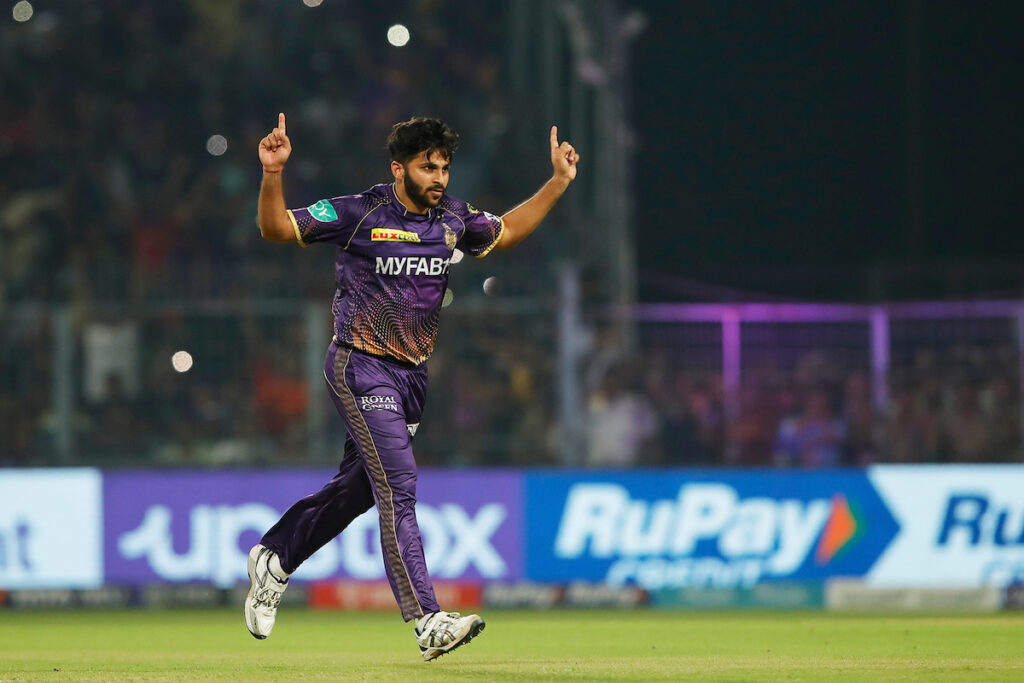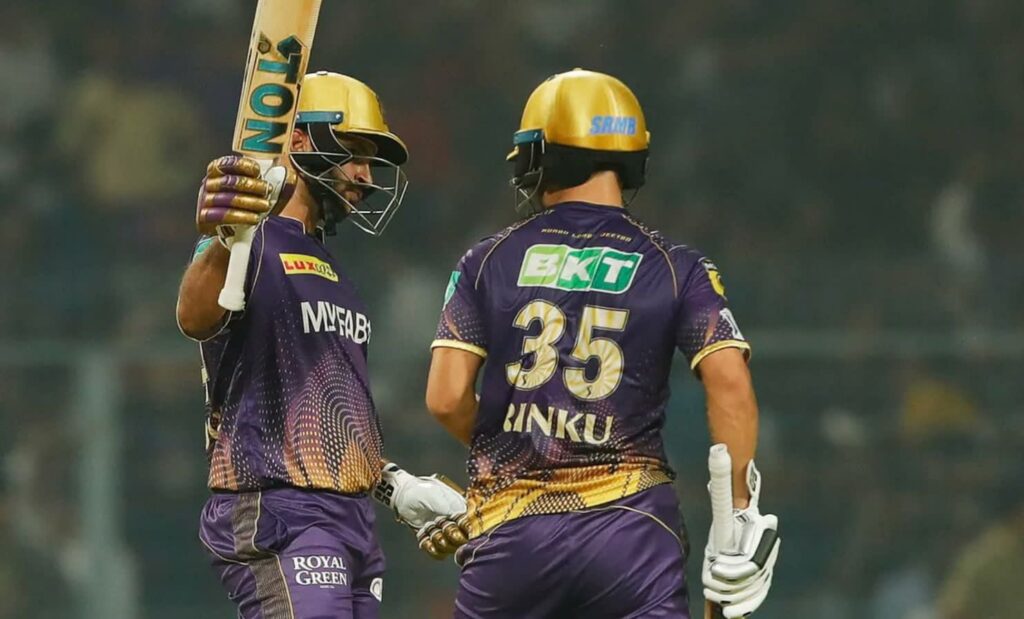
— Boria Majumdar
Extracted from Mission Domination by Boria Majumdar and Kushan Sarkar.
There is a saying that if you are talented, Mumbai doesn’t let you return empty-handed. Shardul’s story started in 2006. Dinesh Lad, the cricket coach of Swami Vivekananda International School, had been frantically calling one Narendra Thakur for at least six months, but each time his proposal was met with stiff resistance. Narendra Thakur was a vegetable farmer from Palghar, a district on the western lines around 90 kms from proper Mumbai. Lad had watched Thakur’s teenage son Shardul perform at an inter-school event and wanted the 14-year-old to join his school. Lad, a former Western Railway cricketer, is a disciple of the great Ramakant Achrekar. He was Achrekar’s student in the late 70s and early 80s. Just like his guru had an eye for talent and the ability to convince parents to get their wards to enrol with Sharadashram Vidyamandir, Lad would also venture out on a talent hunt in and around Mumbai after the Borivali school’s management had entrusted him with the responsibility of building a competitive cricket team. In trying to do so, he spotted a young Shardul, who defied his slight build to bowl reasonably quick and could also put wood to leather with a lot of conviction.
“I called up Shardul’s father at least 20 times in those six months and every time he would politely tell me ‘Sir hum apne bachhe ko roz paanch ghante ka safaar nahin karwayenge. Uska padhai thik se nahi ho payega.’” It was what any other middle-class Indian parent would tell any games teacher. Academics is important and more so if the kid has to make a round trip of five hours between Palghar and Mumbai regularly.
In India, most people have their exclusive “Eureka” moment over a cup of steaming hot tea while discussing monthly budgets with their spouses. This is precisely what happened with Lad. One evening while he was sitting with his wife, Deepali, he asked her if she would mind if he decided on keeping young Shardul with them in the house? “If you feel that’s the right thing to do, I have no problems,” was Mrs Lad’s answer. “I feel, that my wife’s unconditional support went a long way. Yes, people come up and congratulate me for Rohit, for Shardul, but Deepali’s role in their development can’t be overlooked. She had faith in my conviction, and that’s why I could do it the way I wanted.” The next moment, Lad was again on the phone with Narendra, but this time he had a fresh proposal. “Will you be okay if Shardul stays at my place, studies at Swami Vivekananda, and takes cricket coaching? I feel he will play a decent level of cricket in coming years,” was Lad’s last throw of the dice, and this time Thakur senior was taken aback but wasn’t dismissive. Narendra relented and thus began the story of Shardul Thakur.

From the heavily crowded suburban trains, to the dusty Mumbai maidans and to those five days at the Woolloongabba when the struggles and hard work of those years finally bore fruit. It started with six sixes in an over for Swami Vivekananda in a Harris Shield Plate division game against Sarvepalli Radhakrishnan School. The unfortunate bowler was a spinner named Vishal Dhruv. He loved his batting, and even though he was a specialist bowler, he enjoyed hitting those big sixes. Kapil Dev was certainly the first ‘Man from Hinterland’ success story in Indian cricket, but it’s now an undeniable fact that Mahendra Singh Dhoni’s fairy-tale story was the trigger for many to follow. “Shardul is that gaaon ka ladka (village boy) that you will be fond of. Quietly confident, respectful, but with tremendous determination. Otherwise, after that extremely disheartening Test debut where he hobbled out, he couldn’t have made a comeback in Tests. Yes, the injuries in the Indian team played a part, but when he got the chance, he looked the part,” Lad said. Staying in the Lad household, Shardul became an extended family member and a brother to their only son Siddhesh, and it helped him concentrate on the game. What about the expenses of staying in the Lad household, and how did he manage that? “The expense of staying in the house is playing cricket seriously, and Shardul did that. As far as money is concerned, I have never cared. Bhagwan de deta hai (God is the provider). If Siddhesh is my son, it’s not different with Shardul and all others who have stayed with me”, says Dinesh Lad.
A glance at Shardul, and one can’t help but feel that he is an antithesis to what a fast bowler usually looks like. He would struggle to be 5 feet 8 inches and is different to the mean, lithe physique that some of his contemporaries possess. There aren’t any six or seven packs around that torso of his, but once the red cherry lands on the surface after a smooth load up, the batsmen have felt being hurried on to their shots. A sturdy village boy toughened up by the Maximum City. Add to it, his ability to bowl a mean bouncer and get the reverse swing going with the old ball, he became a valuable asset for the Mumbai Ranji Team.
“His stint with CSK under MS Dhoni has helped him a lot in developing good game awareness in white-ball cricket. He was always a very good red-ball bowler. Dhoni gave him opportunities at the big stage which paved his way for the selection in the Indian team,” Shardul’s childhood coach said.
When Shardul made his debut for India in the white-ball format in 2017 in Colombo, something completely unsavoury happened in which the young man had no role to play. Shardul during his first series was handed the No 10 Jersey and social media, which is now a function of time and age, was quick to pounce on him for his audaciousness to even think of wearing Sachin Tendulkar’s jersey. The trolls had a field day and Shardul then wore Jersey No 54 with BCCI rightly retiring the jersey, which they should have done in the first place, and saved the youngster from the ordeal that he faced during that phase. His school senior Rohit Sharma took his mickey on twitter that year on his birthday. “What’s your jersey, no?” was the Indian captain’s cheeky query on 16 October 2017.
Shardul deserves every bit of the newfound fame and a steady stream of money–virtues that any decent IPL and India team player enjoys, but Lad felt he hasn’t changed. “He can afford to buy a house in Mumbai, but he hasn’t. Even when he had played for India or IPL, initially, he didn’t buy a car. It was our car that would pick him up from the airport. He still has those middle-class values and doesn’t waste money. He still stays with his uncle’s family at Vile Parle.”
The world around him has changed but Shardul hasn’t.
We requested Lad to tell us that apart from the match-winning performance at Brisbane, what is the best gift that Shardul has given to him. Shardul’s coach smiled before saying, “A father figure can never ask for anything from his son. But yes, whenever he used to go back to Palghar for a break, his parents would pack fresh vegetables from their farm with Shardul. Uske khet ke bahut sabzi khaye hain,” he laughed.



